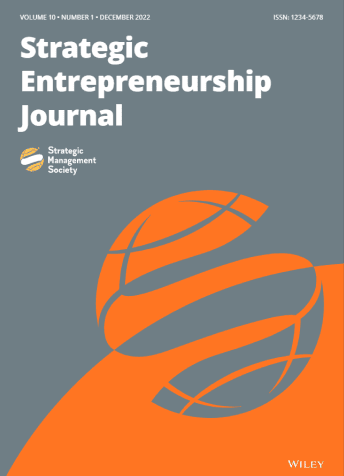by Matthias Wenzel, Leuphana University of Lüneburg, Germany
The digital transformation has generated new ways of communicating a firm’s strategy to relevant stakeholders such as investors, business partners, and customers. Among others, these ways of strategy communication include keynote speeches, posts on social media, blog posts, and podcasts. This plurality opens up an array of possibilities to communicate a firm’s strategy. Yet, it also renders strategy communication more complex, given that each way of communicating requires specific skills in language use to be mastered effectively. This complexity exhorts strategists to devote greater attention to their ways of strategy communication.
However, language use may be even more important in strategy-making than often considered. According to a recent SMS Collection by Eero Vaara and Laura Fritsch, “language use is a crucial part of strategy work and strategic change – to be taken seriously in its own right.” As the authors argue, the ways in which strategists talk and write about a strategy shape that strategy, how it is understood, and which strategic initiatives may be endowed with resources and eventually pursued. Vaara and Fritsch specifically highlight at least three key features of language use in strategy-making to be mindful about.
Language Use in Strategy-Making is Both Subtle and Impactful
Strategists partly do not devote much attention to how they use language when making a strategy. And yet, strategists’ language use tends to shape unfolding conversations about the strategy in oftentimes unnoticed ways. Hence, strategists’ conversations are not “just talk”: Their language use in strategy-making can be subtle and nevertheless have important consequences for a firm’s strategy.
Mundane Language Use Can Create Large-scale Strategic Change
The consequences of language use for a firm’s strategy might be greater than often believed. In fact, it is difficult, if not impossible to think of strategy-making without strategists’ language use, as it appears even in mundane situations such as informal chats with colleagues in the hallway. Yet, despite this mundaneness, strategists’ conversations may massively reorient a firm’s strategy, as they may open up creative ways forward while excluding other potential directions.
Language Use in Strategy-Making is More than Speaking and Writing
Language use is often reduced to ways of speaking and writing. Yet, strategists may also talk through “body language”, such as gestures and gazes. The same is true for objects that are widely used in strategy-making, such as prototypes and PowerPoint slides. Such objects may come to express a strategy without further needs for verbal explanation. Hence, it is the totality of spoken and written as well as bodily and object-based communication that matters in strategy-making.
On the Authors of the SMS Collection
Eero Vaara is Professor in Organizations and Impact at Oxford University.
Laura Fritsch is PhD student at the Oxford University Center for Corporate Reputation.
The SMS Collection on “strategy as language and communication” can be accessed here.



